Iceland is a big ticket item for us and has been for quite some time now. It was to be our starting point last time but we ended up working for an extra 4 months which changed the window of where we started. The main issue that we have had is that Iceland tourism window is incredibly narrow (during the summer) due to the weather.
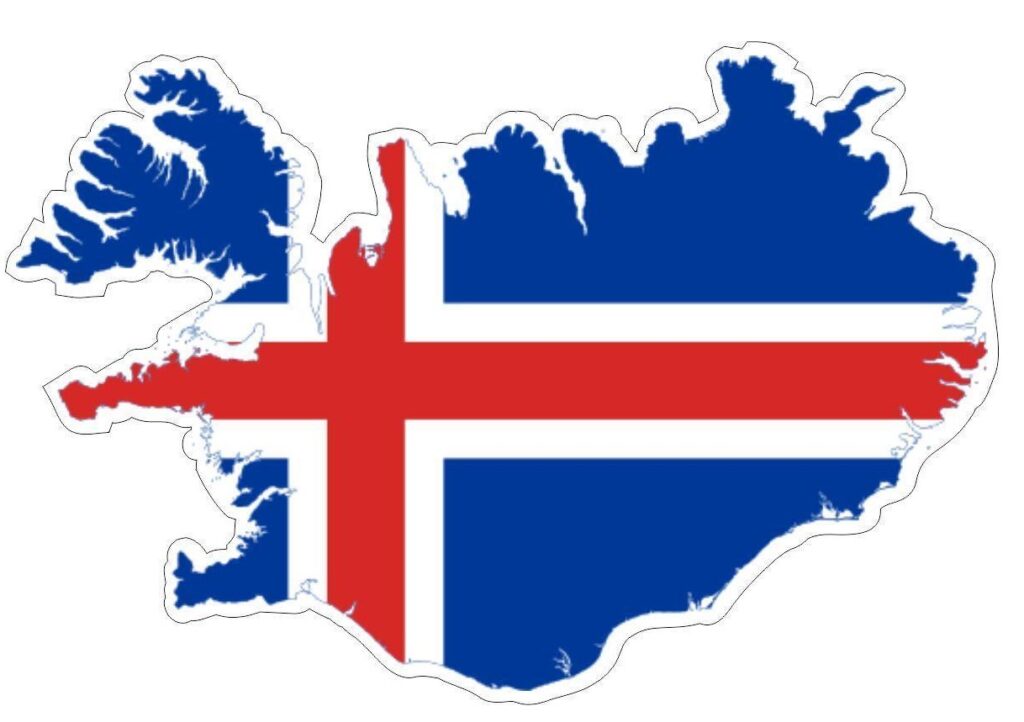
Iceland is a country of extreme contrasts and dramatic landscapes. Widely known as “the land of fire and ice,” Iceland is home to some of the largest glaciers in Europe and some of the world’s most active volcanoes.
And as the name suggests, Iceland was used as the filming location for a fair deal of the television show Game of Thrones.
The country is divided into 7 different geographical regions. Each differing slightly in culture and landscapes, but are all uniquely Icelandic. Iceland is most famous for its rugged landscapes and scenery. The Northern Lights, Blue Lagoon, volcanoes, glaciers, and waterfalls top the list of must-sees. Iceland is also famous for its history and being settled by the Vikings.
The other thing that strikes you when you start getting into Iceland research is that none of the words or letter combinations are even the slightest bit familiar and all words are virtually unpronounceable.
The Pledge
In doing our early research I hit the official website and found the Icelandic tourist pledge and had to share it.







Iceland Volcanos
Iceland is one of Earth’s most volcanically active areas. On average, Iceland experiences a volcanic event every four years. Probably the most noteworthy one was in 2010 when Eyjafjallajökull erupted stopping all air traffic over Europe for several days due to the ash in the air. The official site claims that there are currently 32 active volcanos in Iceland.
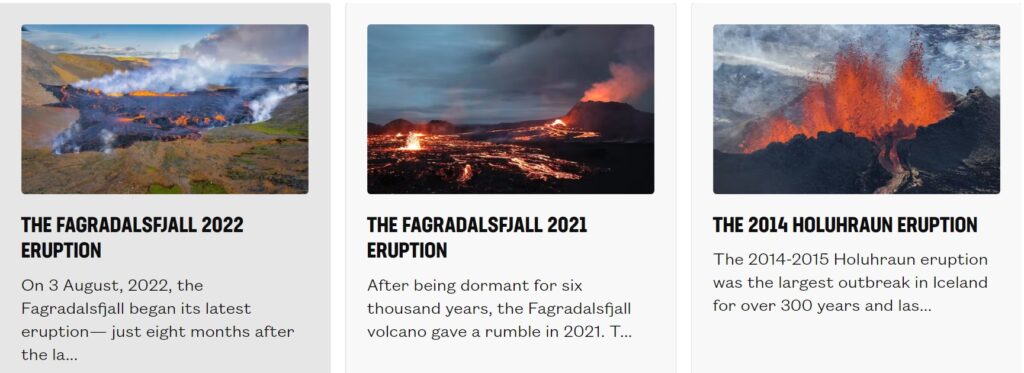
The geology tells us that, Iceland sits on top of the Mid-Atlantic Ridge (a 40,000 km long crack in the ocean floor caused by the separation of the North American and Eurasian tectonic plates). Each year the country grows about 2 cm, as the crack splits wider where the tectonic plates meet, and new magma fills up the gaps.
This geological activity is responsible for many of the features of nature, including the mountainous landscapes, black lava fields, black sand beaches, geothermal pools, geysers, and even glaciers. Interestingly, over 85% of the houses in Iceland are heated by natural geothermal heat from hot springs.
Iceland Glaciers
There are 269 (named) glaciers in Iceland, this equates to about 11% of the entire country. Glaciers are created over thousands of years as fallen snow compresses and forms a huge mass of ice, usually in mountain valleys. The biggest glacier (Vatnajökull) is about 900 metres at its thickest point.



Iceland Waterfalls
Iceland has over 200 named waterfalls (foss). If you use the literal definition of where the water ‘falls’, the experts estimate that there are around 10,000 of them.

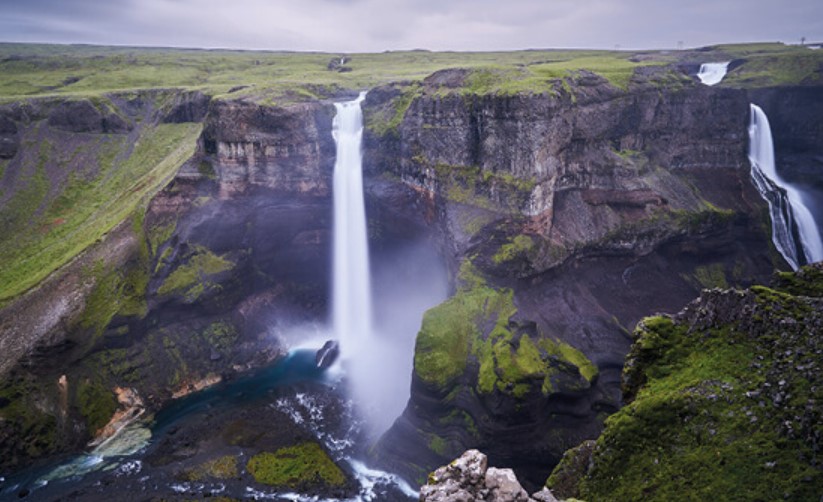

Northern Lights
Between September and April, the aurora Borealis or Northern Lights take over the skies. Sadly our summer trip did not let us see this but it will be a factor in planning possible future trips.





The Midnight Sun
This one hit us fairly and squarely. Between mid-May and mid-July, the midnight sun lights up the Icelandic nights. This means that it never gets entirely dark. For us the Sunrise was at 3:05am and sunset was at 11:45pm. The issue is that twilight then extends either side of this meaning that at best there is about 20 minutes of actual darkness.
To say that this messes with your sleep pattern is a serious understatement.
Reykjavik

Reykjavik is the capital of Iceland and is known for its many colours, museums, buildings, nature and beautiful surroundings. Sadly on the day we arrived, it was icy cold, raining and all in all pretty miserable. But we were here and had limited time. So we put on our big girl pants and headed into the arctic weather.
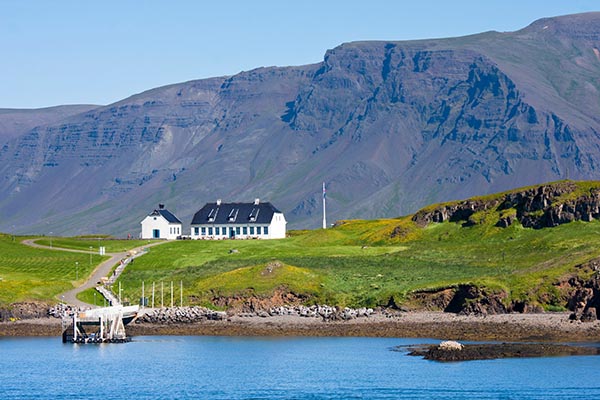
Before we set off though, I need to comment on Videy Island. This is the first thing that you see when you enter Reykjavik from the water. The island consists of two parts that are connected by a spit of land and is a remnant of an extinct volcano.
But most importantly, it is exactly what you imagine when you think of Iceland, green grass, volcanic rocks and a stunning house miles from anything. As it turned out we saw this scene repeatedly throughout our time here, but this was truly the archetypal image that we had in our heads and it delivered on minute one.





We hopped off the boat and got the shuttle bus towards town. The drop-off point was at the Harpa, which is an 1800-seat concert hall, located on the harbour. From here we did a (rather soggy) walk along the waterfront promenade to see the Sun Voyager. This landmark looks like a Viking ship but is actually a dream ship. It is made of stainless steel and is meant to represent hope, freedom and progress.



From here we headed up to the top of the hill for the big show in town, the Hallgrimskirka. This is the big Reykjavik Church atop the hill, right in the centre of town. It is the tallest church building in Iceland (74.5m), was built between 1945 and 1986 and can be seen from all over the city. The interior of the church is very modest, but the eye-catcher is the organ with 5275 pipes.





From here we headed down the hill towards Lake Tjörnin, past town hall and on to Austurvöllur Square. The town was really quite nice and it is a shame that the weather did not lend itself to better photographs.







We went to Reykjavik’s oldest hot dog stand, Bæjarins Beztu Pylsur, which has gained cult status; according to the locals, these are the tastiest hot dogs available. As such there is a long queue for this stall, we looked at the hot dogs coming off the line (there was nothing appealing about these) so we chose to pass.



Perlan, is the home of the wonders of Iceland museum. It is a glass dome located on the Öskjuhlíð hill in Reykjavik. It has the first indoor ice cave in the world and describes the Icelandic interplay between volcanoes, earthquakes, and other geological forces.
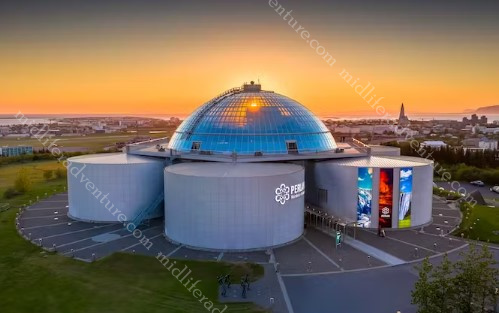
I had heard for years that the Icelandic beers were among the best in the world as they were made on the clean and clear glacial water. Given that it was cold wet and soggy we decided to settle in and test the quality of the Icelandic beer. The first thing that you find out is that this place is incredibly expensive, brutally so. In conversation with the locals, they claim that Iceland is only beaten by Norway in terms of expense.
As an example, a small 330ml beer starts at $13 Aussie and a bar snack to go with it starts at upwards of $20. In fact, a simple local sandwich was running at $32 each. Having seen this I started checking accommodation prices and found that accommodation akin to our Australian roadside motels was running at around $450 a night. At this point, we were glad that we were seeing Iceland on a cruise ship, as any other way would have destroyed our budget.







Kaldi Blonde is the most popular bottled beer in Iceland, at 5% it is brewed in the Pilsner tradition and inspired by Czech lager. Bríó was the next that we found on tap, in 2012, it apparently won the ‘World’s Best Pilsner’ category at the World Beer Cup. This was closely followed by Egils Gull a nice crisp lager at 5%. Next came an Einstök these come in 4 varieties: the White Ale, Arctic Pale Ale, Toasted Porter, and Wee Heavy, at 6% I had the toasted porter. Polar beer was a local Reykjavik beer that came in at 4.5%. Úlfur, which translates to ‘Wolf,’ is an Indian Pale Ale (my least favourite).
For the most part, Icelandic beer was very pleasant. I don’t think that they were worth the obscene prices that were being charged for them, but they drank well and hey, when in Rome. But sadly, as with everywhere else on the planet, the craft-beer mania has set in, with new labels and microbreweries emerging all the time.
The next day the weather turned on us and we actually had a nice day. It was cold (max of around 8) but the rain had gone and the sun was threatening to poke its head out. We were booked on an early morning tour through the countryside and on to the Blue Lagoon. These are a set of beautiful geothermal baths that are about, 40 kilometres out of town.



We set off at 7am and within 10 minutes of leaving the port of Reykjavik you are already driving through black lava fields covered in slow growing moss.
On arrival, you are shuffled into a room and forced to change and shower before we could get near the lagoon.
Now sopping wet, and cold, we found ourselves in our swimming gear, as I headed out the door into the open air (in 2 degree temperatures). It is fair to say, that it was a touch bracing.
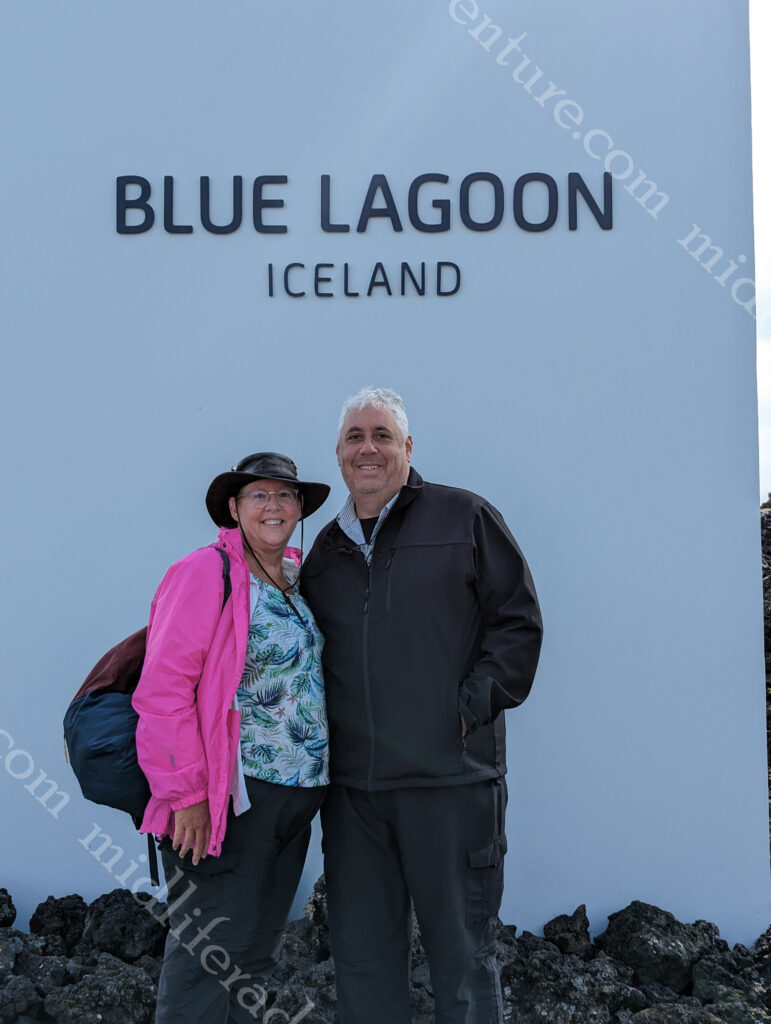
Having caught my breath I aimed for the water, hoping to find some relief from the ice shock that I had just experienced. The water was warmer, in fact it was between 37-40 degrees. So I lolled about in the water waiting for the bride to emerge. While lolling about waiting, it started to snow on me. Lazing in warm 37-40 degree lagoon water, while snow landed on our heads was a surreal experience indeed.
The bride did eventually come out, but apparently near the women’s change rooms was a gentle entry point that allowed you to enter the water from within the warm building and slowly migrate towards the outdoors. The lagoon itself has a mix of sea and freshwater and the water is drawn up through geothermal extraction wells from 2-kilometres beneath the Earth’s surface.






The entry price included the towels, shampoo (the water is terrible for your hair), a mud face mask and a beverage. So once again, I found myself lolling in 37+ degree water, in 2 degree temperatures, at 9am, drinking a cold beer, while snow landed on my head, and then I had a mud mask. Not a usual day for me.





A cheaper alternative to the Blue Lagoon is the Sky Lagoon. These pools are closer to Reykjavik and have only been open for a few years. They provide great sea views while relaxing in a geothermal bath.
Speaking of geothermal baths, it is important to mention here that Iceland supplies 99% of its overall energy requirements through green energy, (mainly hydropower (73%) and geothermal (26.8) production). The remainder is because cars and trucks still run on fossil fuels. The green energy revolution transformed the population from a poor, coal reliant society to one enjoying very high living standards. Electric vehicle ownership is growing quickly and there have been large investments in charging infrastructure for electric cars, with charging stations now available all around the ring-road.
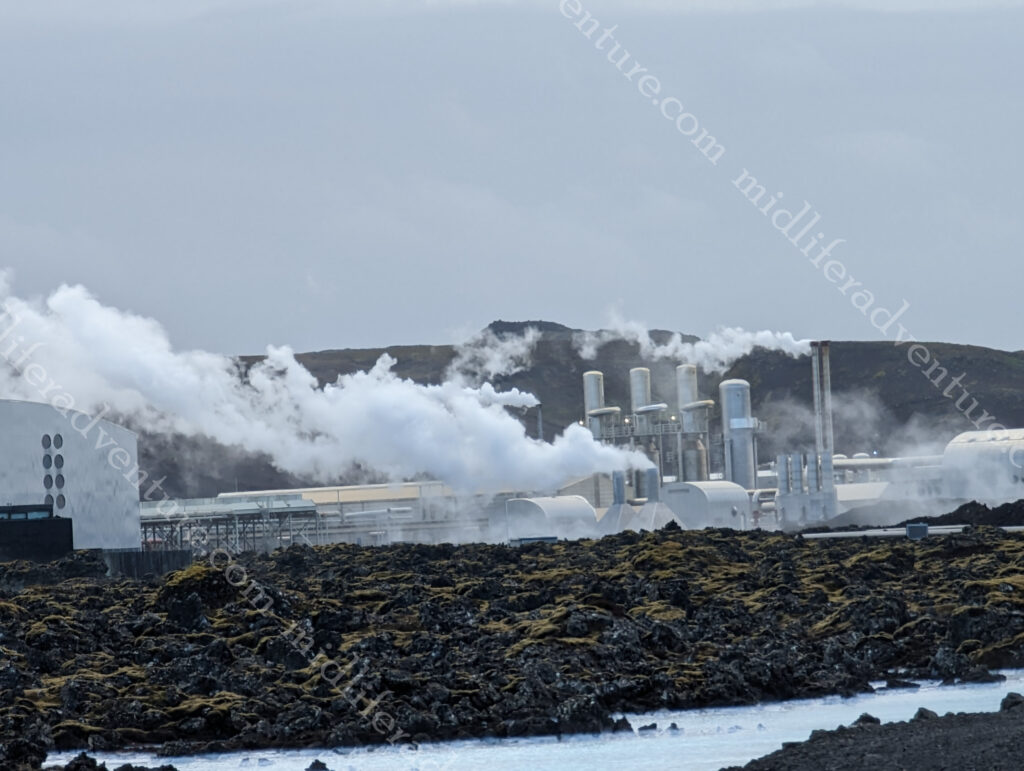
Reykjavik Take II – August 2024

Having been to Iceland, and specifically Reykjavik, in June last year we had already hit most of the big ticket items that were on offer. The obvious was the Hallgrimskirka (big church), Harpa (concert house), Laugavegur (rainbow street) and the Sun Voyager (sculpture) and of course the Blue Lagoon. Our first foray saw us wandering all around town and taking in all of the pretty buildings and the tourist sights.





Having done that we were at a loss as to what was left to see on our two day stopover in Reykjavik. A bit of research revealed the existence of the Reykjavík City Card which offers free entry to a selection of the lesser museums and galleries, all swimming pools in Reykjavík, and free unlimited travel by bus within the Reykjavik Capital Area. The card also gives discounts on various tours, shopping and services.

The card did not include the expensive attractions (averaging $100 entry each) but for about $100 we got access to all (16) of the lesser attractions, free bus transportation and a way to see a bunch of stuff that we would not usually go to on a limited timeframe.
Being us, we titled it the ‘piss weak world‘ card. In hindsight this was an overly harsh description for what was a really good two days of exploring.
DISCLAIMER: I will state up front that modern art, contemporary art and performance art museums are absolutely not my thing. And without wanting to demean their existence, I am certain that I will, and will rank them highly in the piss weak category.
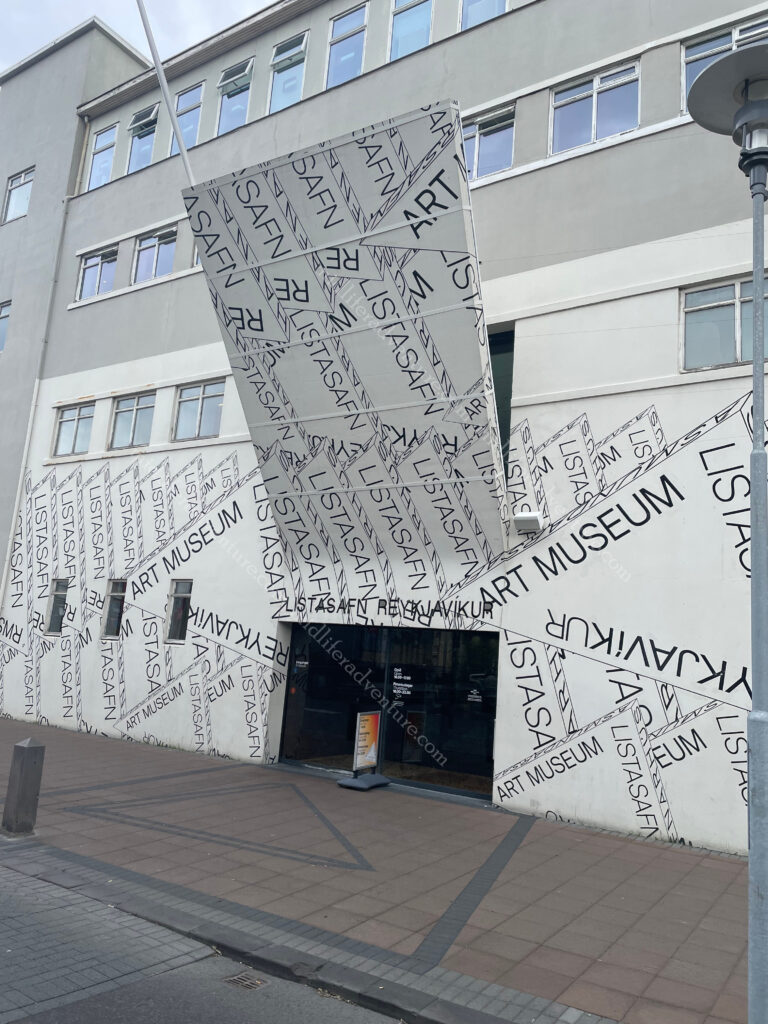
Our first entry was to the (Hafnarhús) Reykjavík Art Museum.
The blurb says that the permanent collection is of works by Erró, one of Europe’s most notable pop artists while the temporary shows tend toward the progressive and experimental, emphasising works from established contemporary artists.
Bearing in mind the disclaimer above, this was dog shit and 30 minutes of my life that I will never get back. Here are a few photos of pretty buildings as we left the art museum and headed to the next place on the list of piss weak worlds.








The next stop was at the Settlement exhibition which was immediately better.
Interesting displays of the evolution of culture and how Reykjavík grew from a farm
to a city.
This one was a really good place to visit.
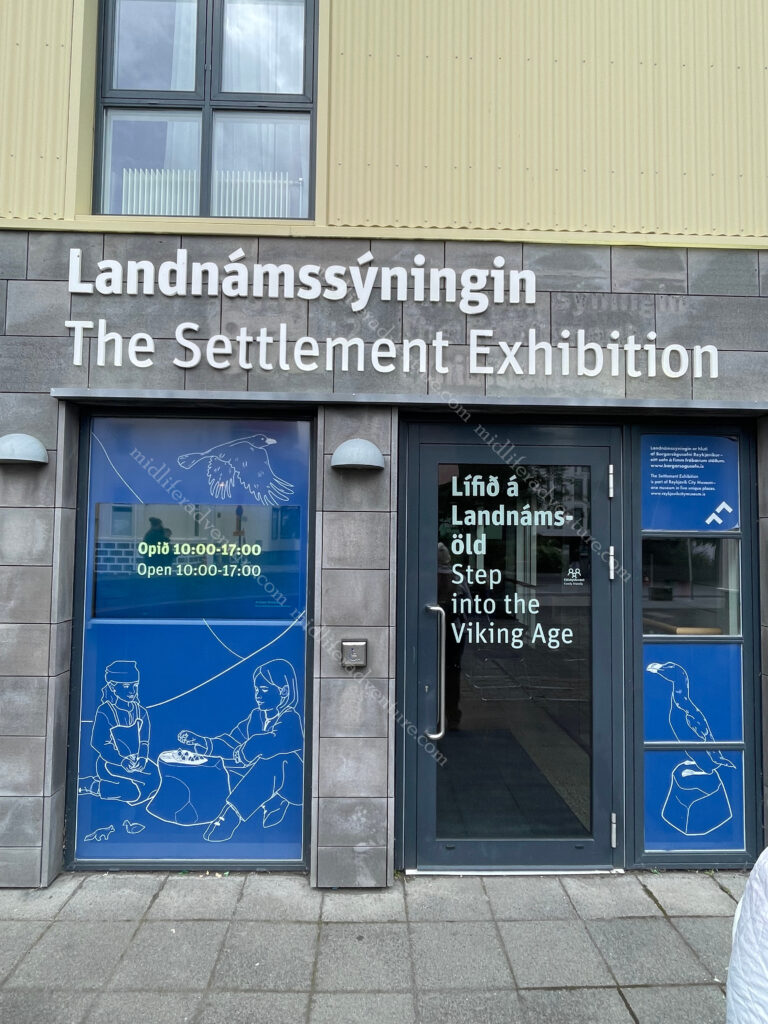
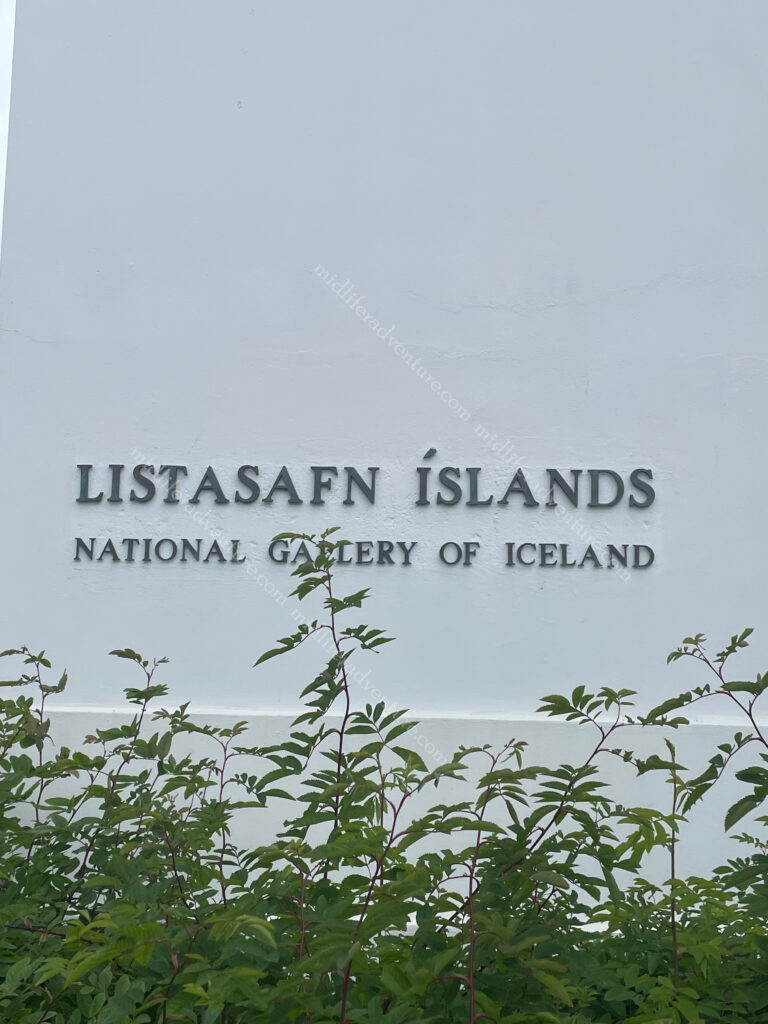
The Listasafn gallery was next and might have been ok but it lost me when I walked into a gallery and found a bunch (about a dozen) of millennials laying or sitting on the floor in frozen poses.
I am sure that there is some deep contemporary art meaning to this, but to me it just screamed trust fund kids with nothing better to do.
Pass on this one.
The National Museum (Thjodminjasafn) is the oldest museum established in Iceland. It offered a variety of exhibitions illustrating the story of Iceland’s past, from
the Viking age to modern times. Excellent.
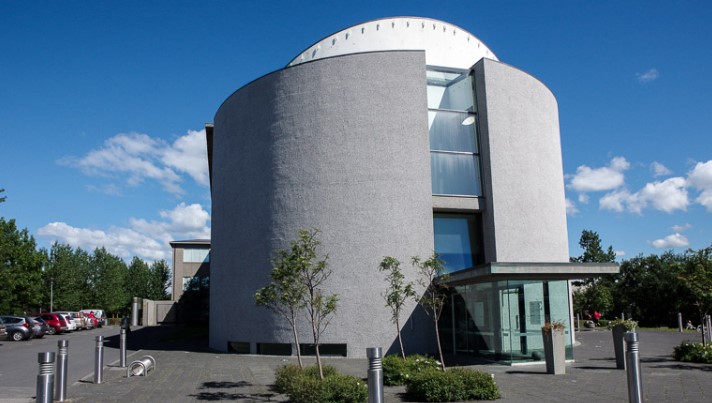
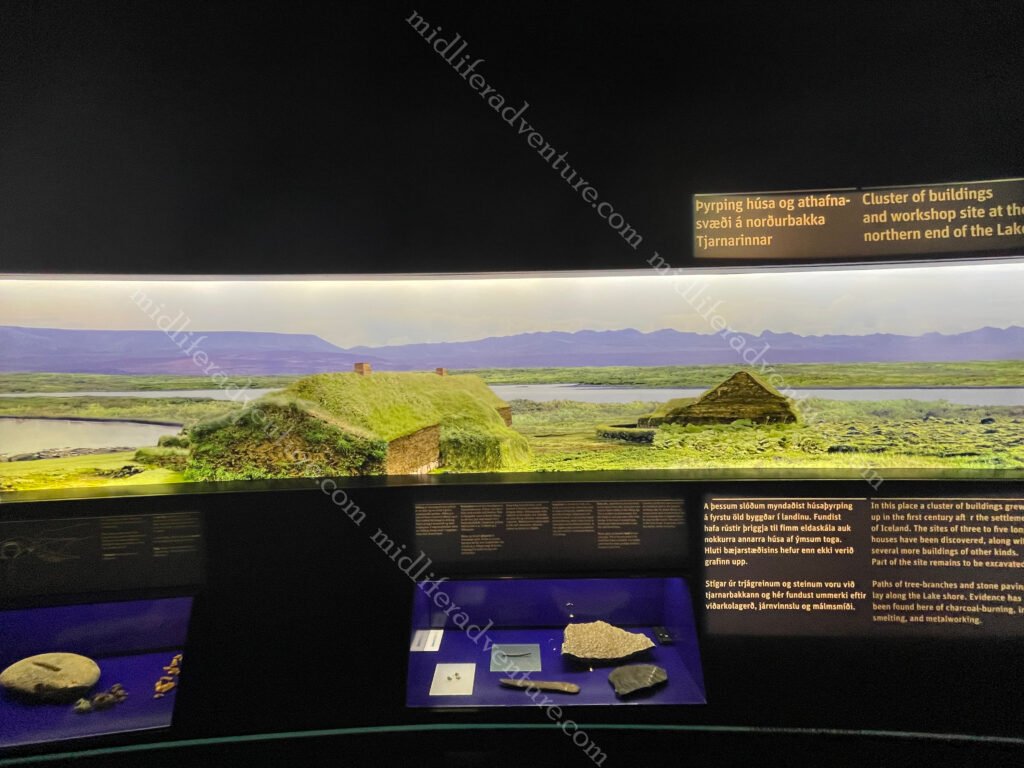
The next was the House of collections which was excellent again. This one aimed to bridge the gap between visual arts and science.
After this we were off to the Reykjavík Maritime Museum. Built in the old fish processing factory it was an odd sort of mix between museum and old school fish and chip shop.
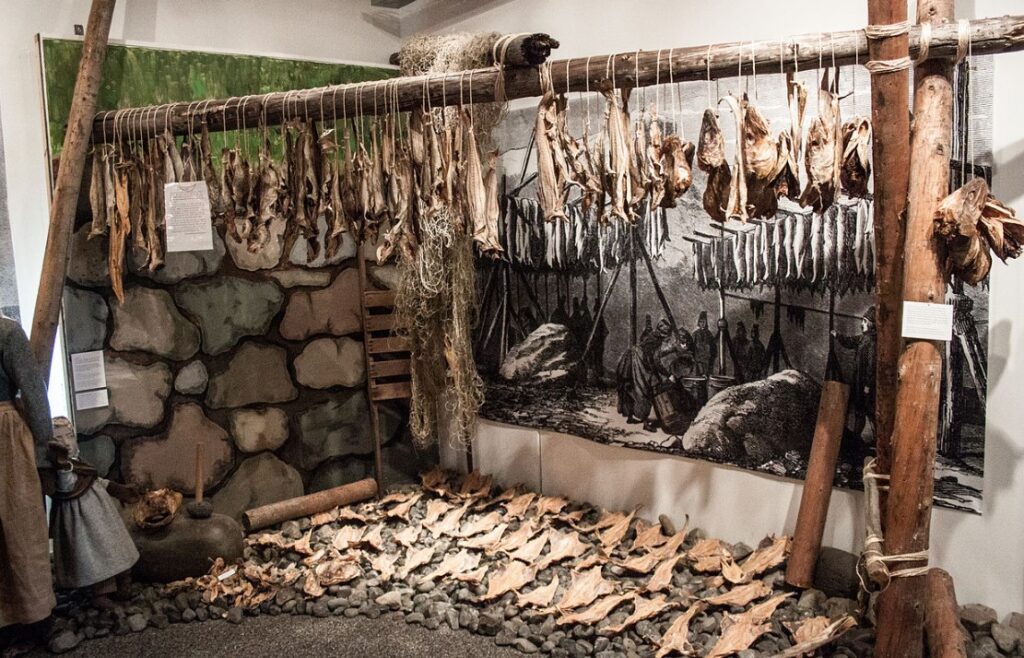
We looked at the flyer for the Reykjavík Zoo to find that their cover image had cows on it. Having seen cows before, I figured that this zoo was more like a small Chinese dog (a Shih Tzu) so we skipped it.
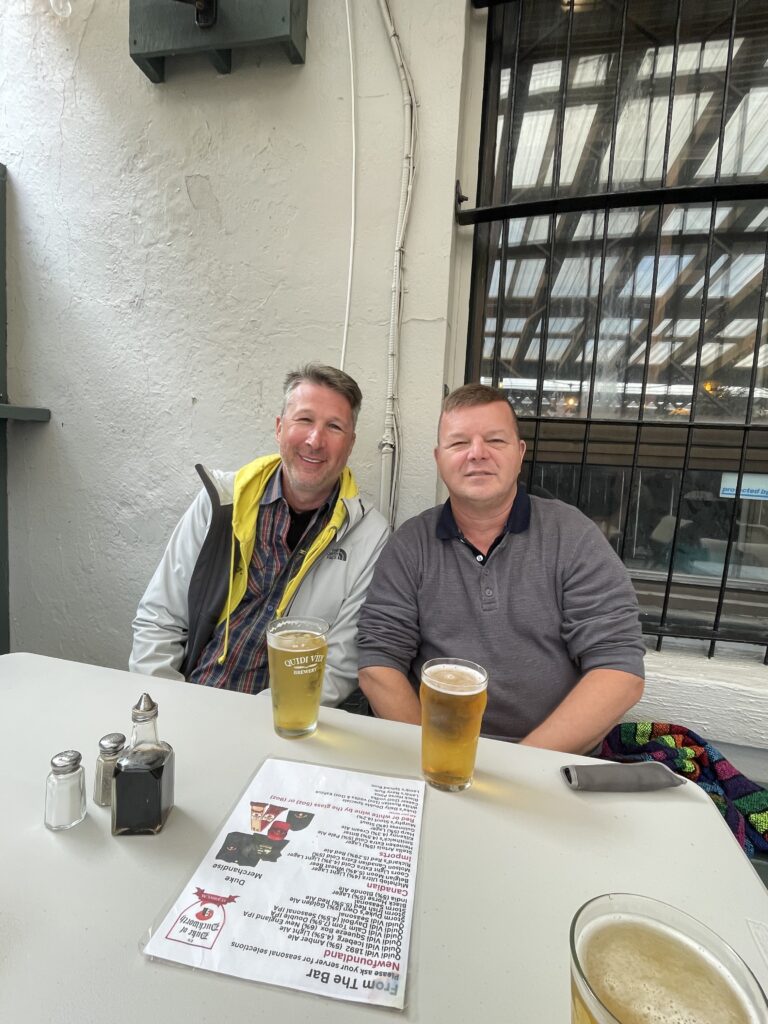
That evening we made our way to one of the local swimming pools (Sundhöllin), with our dinner buddies Mark and Curtis.
Sundhöllin is a series of pools and saunas of varying temperatures that are very popular with the locals and offer an insight of the local lifestyle.
People of all ages were hopping from the 2 degree ambient temperature into the hot pool (39 degrees) and then plunging into the 12 degree pool or doing laps in the 20 degree pool. Others were heading straight from the really hot saunas, into the plunge pool and back.

I did the hot / cold / hot plunge and had a tingling sensation all over my body for the next few minutes. From here I settled in the hot pool for the next 20 minutes until it was time to get out into the 2 degree night air and race inside for hot shower and getting changed.
The next morning it was up early and off on the local bus into the outer suburbs of Reykjavík to visit the Árbær Open Air Museum. Now this truly was excellent. This is a historical village displaying tiny houses, as they existed over various periods of Icelandic development. The oldest versions had the turf roofs and stables inside with ingenious cooking and heating systems. As time progressed, so to did the build type and quality. Apart from the fact that it was a 3 degree summer’s day with a howling gale force wind, it was a truly excellent place.

















Long story short, our piss weak world park pass was great value and I cannot recommend it highly enough. Yes there was some stuff that was not to my tastes, but there was plenty more that was. And the best bit was the free bus pass for the duration of the ticket. This gave us the opportunity to explore the city and see things well off the beaten path.
Our dinner buddies (Mark and Curtis) were super eager to see the volcanoes that Iceland had to offer. There had been recent volcano activity and while we went on our day one piss weak world tour they took a $500 (each) helicopter ride over the lava fields. The ride was nice but did not deliver on the sought after lava flows. That night we all headed to the pool for the hot swim and on our return to the ship were told by our favourite staff member (Fabio) that the Blue Lagoon trips for the next day had to be cancelled due to the eruption.
Eyes widened and the next morning they were up early again and had negotiated yet another $500 (each) helicopter ride. This time they hit pay dirt and were kind enough to share these images with us.







And as good as the stills are, the video was far better and you can zoom in and watch spouting geysers of flowing lava. As you can imaging, I pouted because I missed it.
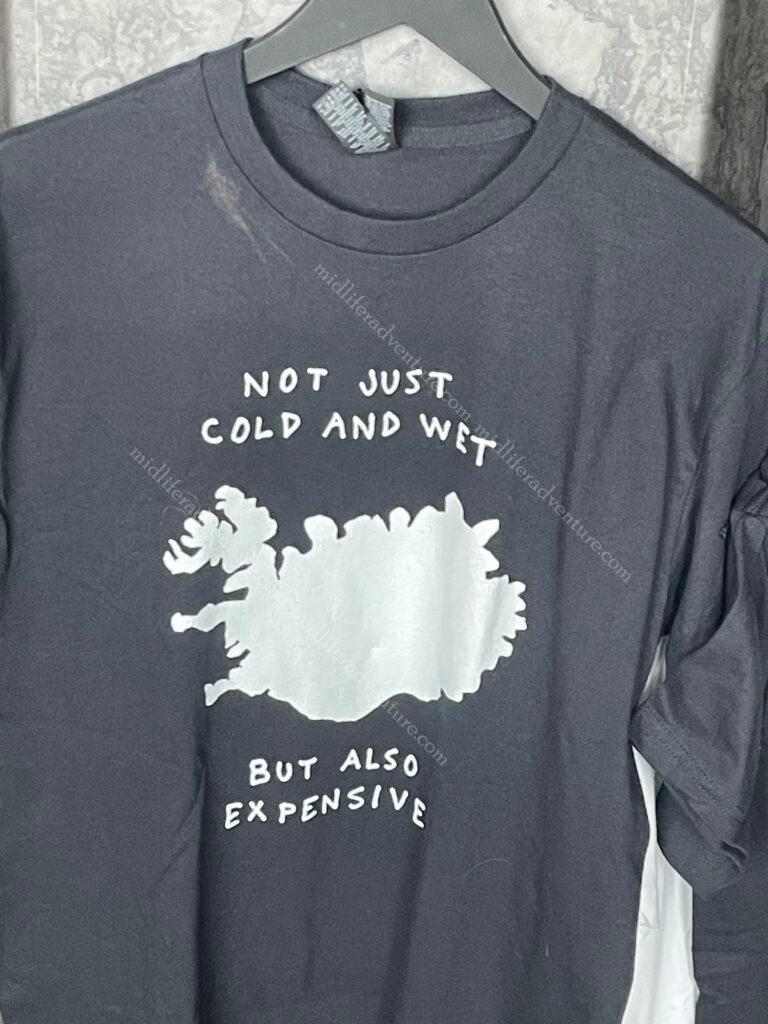
Well I thought that Iceland would be a once in a lifetime experience and as it happens we have now been here twice in the last 15 months.
I must admit that we enjoyed both trips and while the place is seriously expensive and damages the budget, it really is worth making the effort to come and experience it.
Isafjordur
Ísafjörður translates to the fjord of ice or ice fjord and is the largest hamlet in the Westjfords area of Iceland.
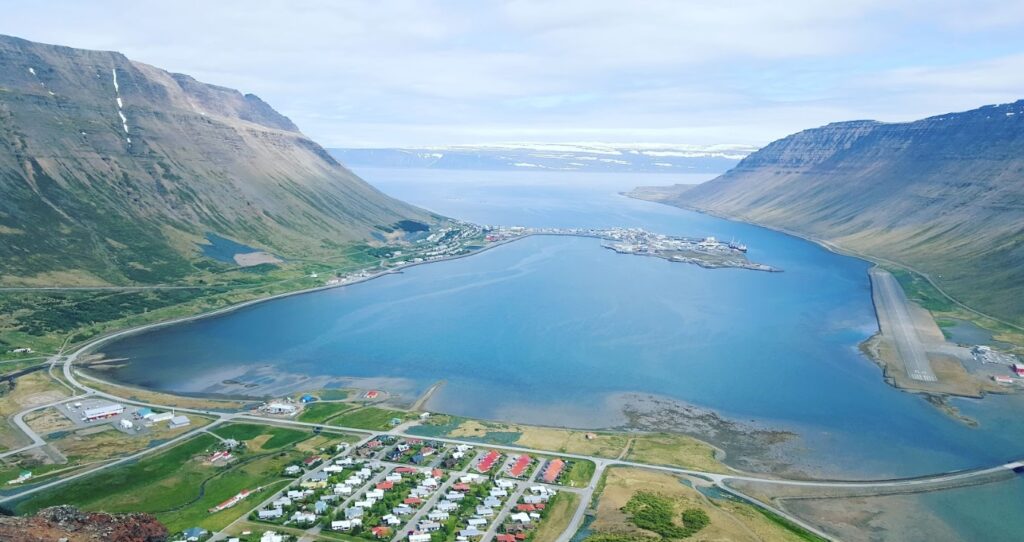
The Westfjords are very mountainous; the coastline is heavily indented by dozens of Fjords surrounded by steep hills. Isafjordur is a tiny town of less than 3000 people and has been the long time center for trade, fishing, and tourism in the region.
The day we arrived it was 4 degrees with a projected max of 6. We stared out of our window to see a wall of black, volcanic rocks topped with a decent layer of snow. We are definitely in Iceland now.

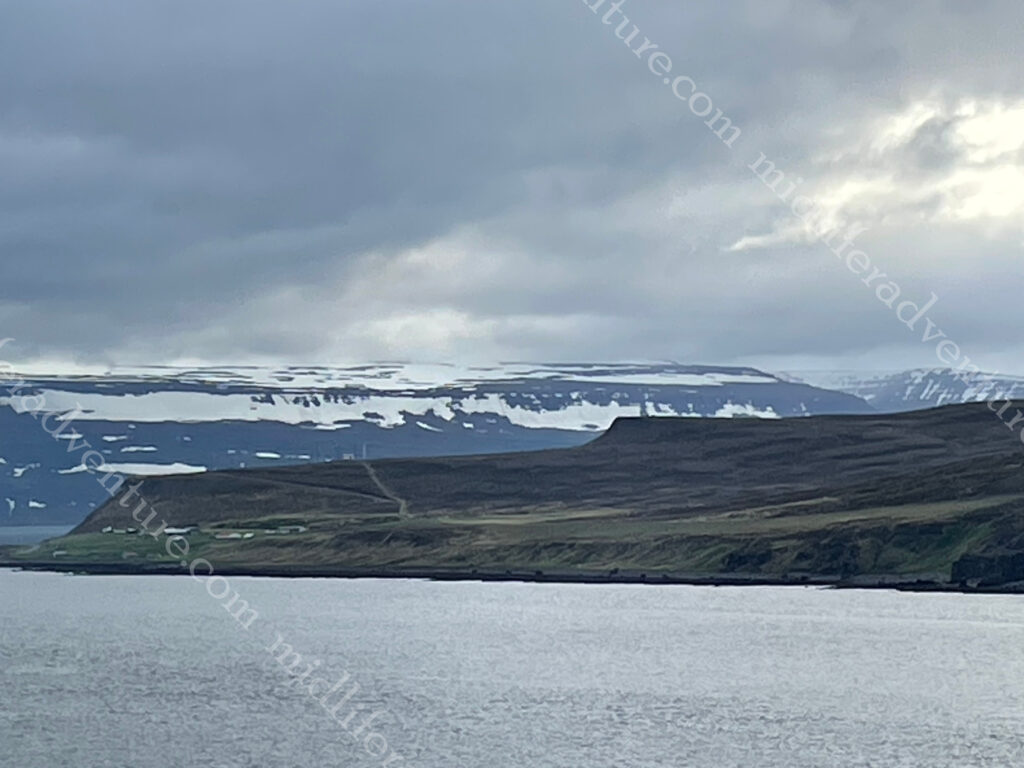


Our trip to Ísafjörður was once again on a cold, grey, overcast day. But as the day progressed the sun did try and peak out every now and then. A tender off the ship and a wander along the rock wall, past the black sand beach and we were almost done. Being a small town it was not exactly an onerous walk to meander through the town and see all of the sights.








Given the cold weather and temperatures here we were quite surprised to see that many of the houses were quite basic and that corrugated iron was so readily used. We were here in summer and were catching maximum temperatures in single digits. So the winter temperatures would be less than pleasant and corrugated iron doesn’t leap out as an overly insulating building material.
While the town was not an onerous walk, there was a lookout at the top of the town that posed a few more challenges. While not an overly long distance, it was all uphill, over uneven, loose volcanic rocks and up an icily cold metal staircase. But once you had made the effort, there was some pretty spectacular panoramic views to be had.



The town of Ísafjörður is surrounded by a rim of flat-topped mountains that surround the fjord. A notable feature is a massive depression – this is Naustahvilft or more commonly known as ‘the troll seat’.
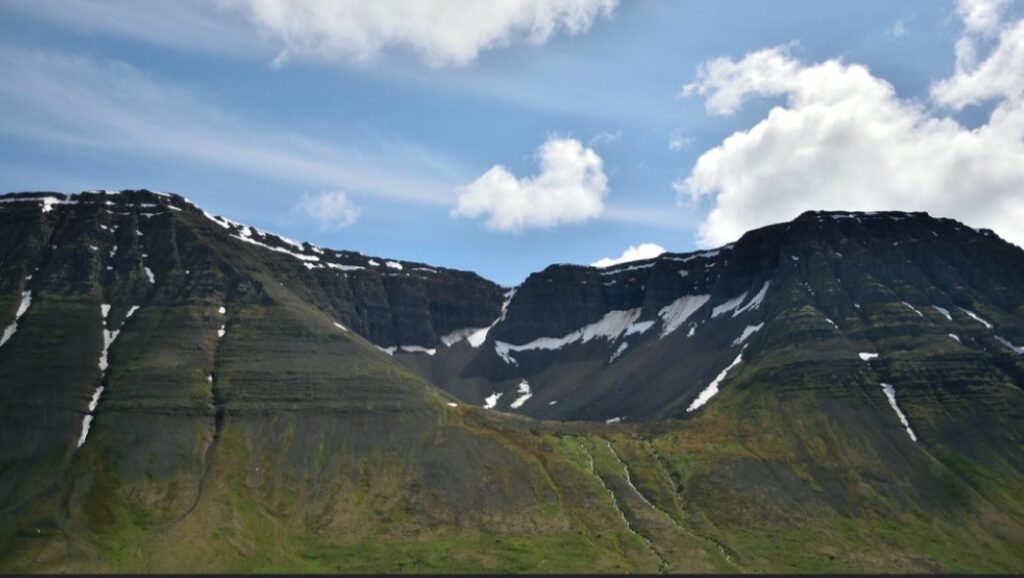
The story goes that a troll was hurrying home before the morning sunlight could turn her to stone. Having run fast and got back early, she sat and rested with her aching feet in the fjord. What was left was the peninsula of Ísafjörður town between her feet, the deep harbour where her feet had been, and the “seat” where her backside had been.
Folktales
Folk tales and stories of elves are very much woven into the fabric of Iceland. They are a big part of what connects the Icelandic people to their land. It is no coincidence that these tales often center around the incredible natural phenomena of Iceland. In turn, the Icelandic people gain a profound connection to the natural world from an early age. These tales nurture a deep respect for nature. And the Icelandic people are fiercely proud of their wild places with a desire to protect and preserve them.
Elves
Stories of elves and the Hidden Folk have been around in Iceland for centuries. Their origins are thought to be from the Bible story of Eve’s dirty children. Preparing for God’s visit to the garden of Eden, Eve washed and cleaned her children. However she didn’t have time to get to them all and tried to hide the unwashed ones. God found out and cursed them to be forever invisible to man.
The Hidden Folk live in rocks and hills and Icelanders are very respectful of their homes, often going as far as curving roads around rocks that are believed to be Elf houses.
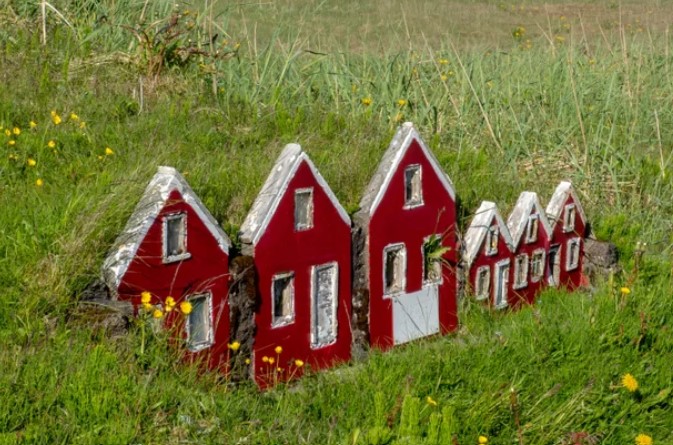
In any case, it doesn’t pay to annoy the Hidden Folk. They are known to be vindictive and there are plenty of stories of them taking revenge on humans that have wronged them.
Trolls
According to Icelandic folklore, trolls lived in the mountains and only came down from them to forage for food. Trolls can only survive in the darkness of night (guess they just stayed home for the endless daylight in summer then) and if they were caught in the sunlight they would immediately turn to stone.
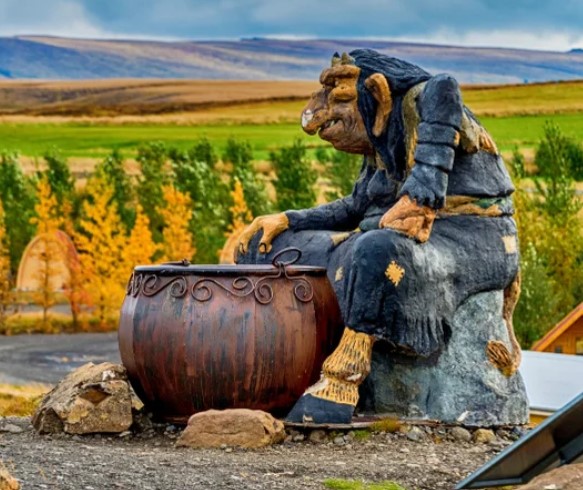
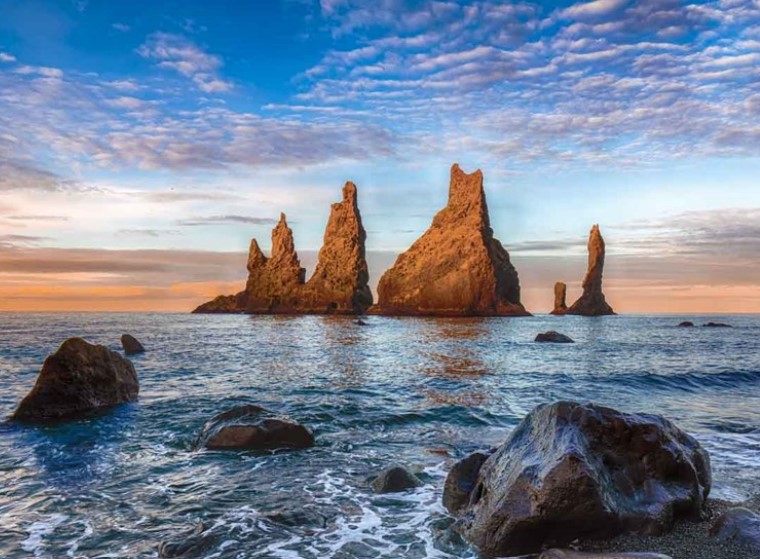
A few of these unlucky trolls can be seen all over the country, the most famous of which are the Reynisdrangar rock formations on the south shore. Legend has it that two trolls were trying to drag a three-mast ship to shore when the day broke and they were turned to stone.
The legend goes that Hvítserkur is a petrified troll. that lived in the Wesfjords but wanted to tear down the bells at the local convent. Icelandic trolls don’t like the sound or sight of churches or church bells. But the troll got caught by the first rays of the sun was turned to stone by daylight.
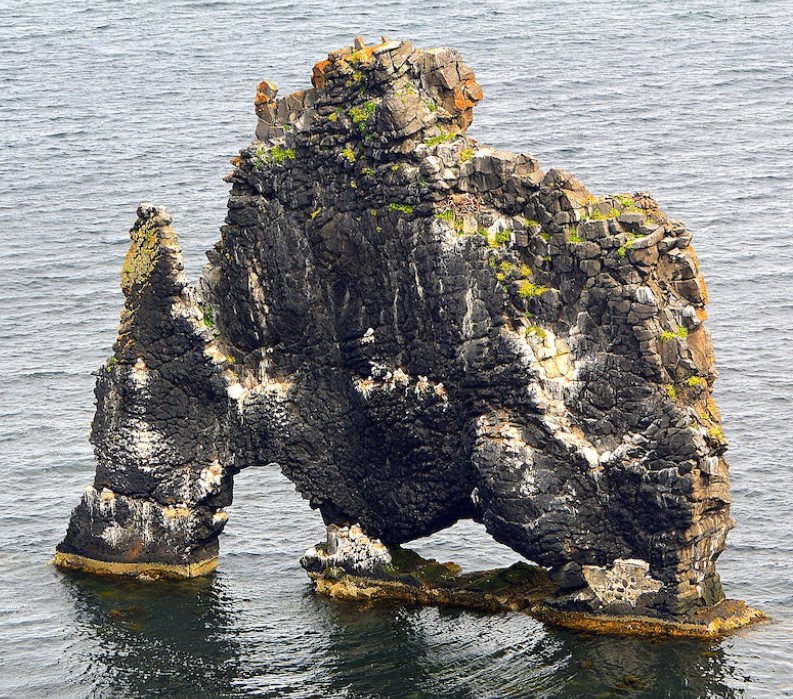
Other Creatures
Iceland also has its fair share of monsters and mysterious creatures.
The Lagarfljótsormur in Lagarfljót in Egilsstaðir is thought by many to be the cousin to Nessie in Scotland. Stories of this giant underwater worm-creature have been around since 1345 and it has been spotted as recently as 2012.
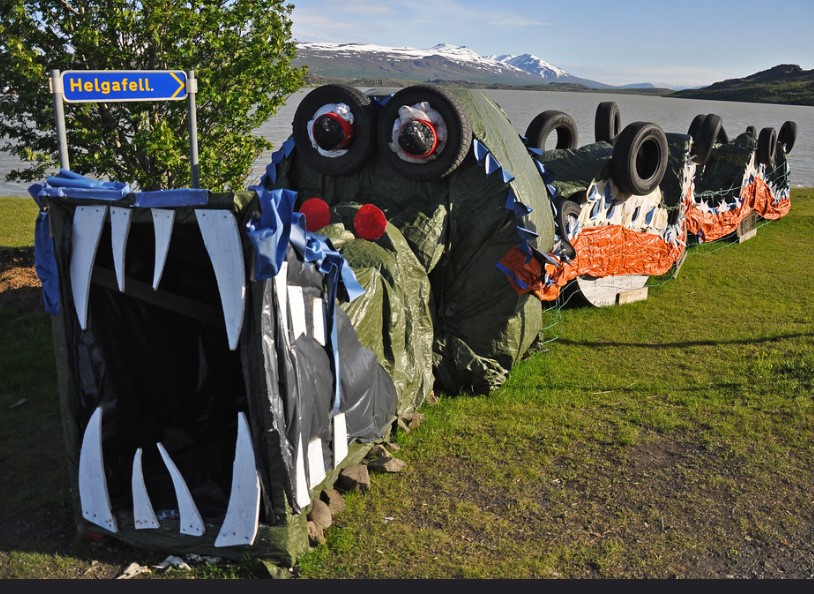
It is said to have grown from a small ‘heath worm’ placed on top of a gold ring by a local girl in order to guard it. When the girl returned to check on her ring the worm had grown so big that she threw it and the ring in the water where it continued to grow and hoard gold.
The Nykur sea horse is also a popular myth. The Nykur is usually found in lakes and rivers and it looks almost like a regular horse, except its hooves are backwards and it’s usually gray. The Nykur will try and get you to ride it but once you do it will run straight back to its lake or river and drown you.
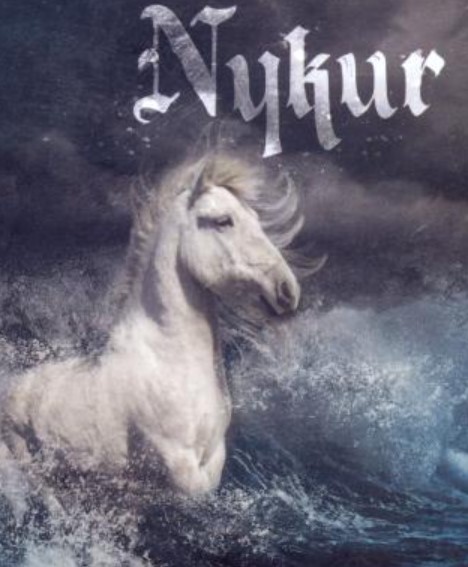
The name Móri is often given to Icelandic poltergeists. The Móri is a male ghost and usually haunts the same family for generations. The female ghosts are known as Skotta. Another famous ghost is Gunna, who wreaked havoc all over the Reykjanes peninsula until she was defeated by the wizard Eirikur frá Vogsosum and confined to the angry, bubbling hot spring Gunnuhver.
Seyðisfjörður
Seyðisfjörður is a tiny town of under 700 in the Eastern Region of Iceland. It is surrounded by mountains (Mt. Bjólfur to the west and Strandartindur to the east). A short way up the fjord is Vestdalseyri where archaeologists uncovered the remains of a woman from around 940, together with some beads.





The town of Seyðisfjörður started in 1848, when it was settled by Norwegian fishermen. They built some of the wooden buildings which still exist today. The first telegraph cable connecting Iceland to Europe landed in Seyðisfjörður back in 1906, and for a long time it remained a telecommunications hub.







The place is stunning. Nestled in the valley surrounded by towering snow capped mountains, everywhere you look is a picture postcard. The snow capped peaks melt with the resulting runoff causing a cascades and waterfalls all along the mountain side.



It remains a significant fishing port on the east coast of Iceland, but most of the income today is generated from tourism. In fact, on the day we landed, there were 2 other smaller cruise ships that were already in port. This meant that around 4-5000 people came pouring into the little town of less than 700.


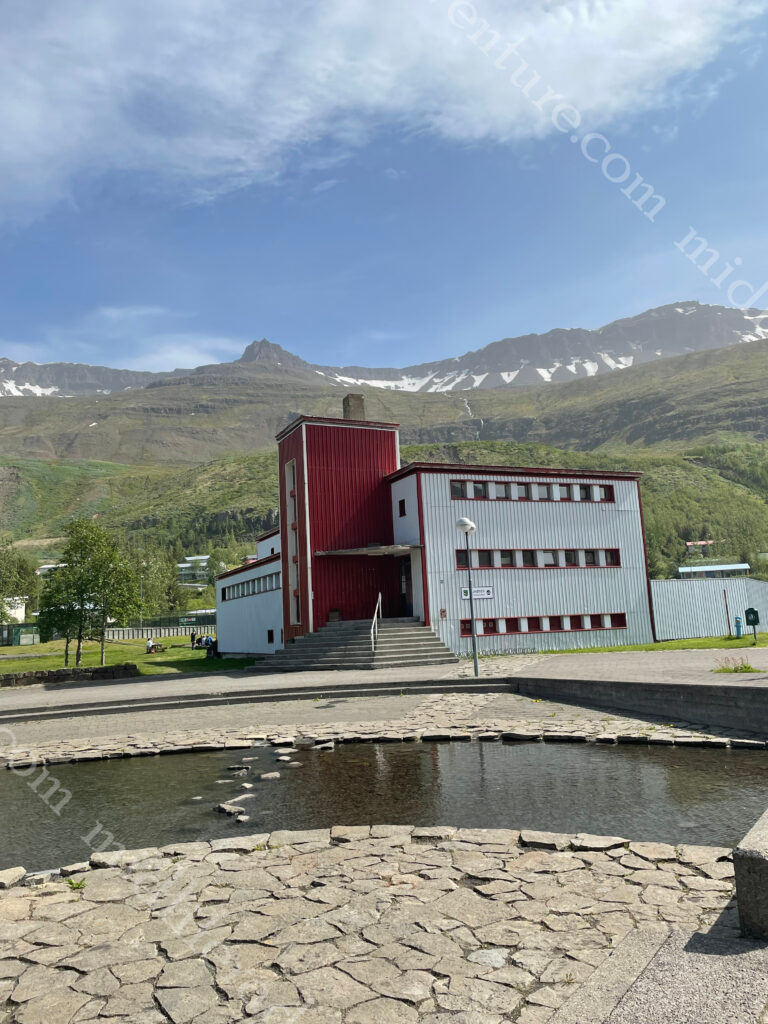


The best thing about the cruise was the random whale sightings that happened almost daily. The area around Iceland is full of humpback whales. This means that every now and then they pop to the surface and blow water spouts, loll about in the water and flip and flop around.





It is quite a sight while you sit down to dinner and all of a sudden a whale surfaces next to your table and frolics about for a bit. Every now and then dolphins also make an appearance. And this happened almost every day. Being fast enough and lucky enough to aim the camera in the right direction was more of a challenge.
Iceland an overview
Iceland was absolutely magnificent to visit and see. The natural beauty is amazing and the people are friendly. They have taken renewable energy to an enviable level (admittedly aided by lots of geothermal springs) and the only real fossil fuels being consumed is for vehicles (and that too is reducing).
The only real detraction to coming to Iceland is the cost. It is prohibitively expensive. Basic hotel rooms (akin to a roadside motel) run at $450 a night and then food and beverage costs are then also exorbitant.
Our version of seeing it on a cruise ship was a nice alternative as the food was covered and the accommodation did not run anywhere near the local prices. We still bought and spent money locally but did not have the massive expense that would have ensued had we tried to visit Iceland by traditional means.
I guess the next bit is to come back here in winter to see the Northern Lights.